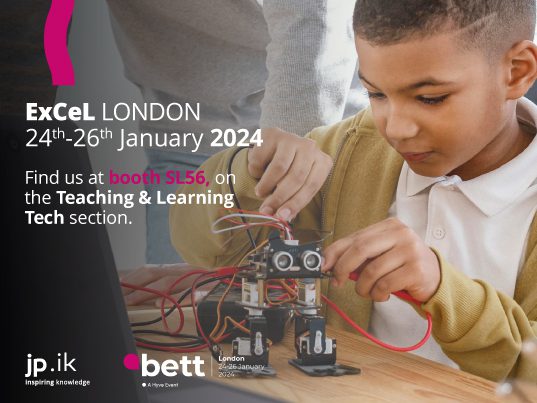As the first measures concerning the new COVID-19 were carried out, schools suspended the classes until further notice and teachers were suddenly thrown onto unknown land, with an equally alien concept to master: ERT – Emergency Remote Teaching. No, that is not the same as home-schooling, that is not the same as online teaching per se, that was not distance learning as it should be. Using social media, Facetime-ing with their grandchildren, keeping an updated cloud drive seemed enough to get teachers feeling tech-savvy, right?
There’s democracy in education now, and parents are getting more involved with their children’s education, at last, some Brazilian bloggers and social media activists would say. Just log into your online classroom account, turn your camera on and here’s your dream remote-teaching scenario.
What everybody needed now was some sort of miraculous super power through which classes would be delivered with engagement, efficiency and grace. After all, everybody is online all the time, aren’t we? A myriad of apps, tips, tutorials, online courses on how to teach online started popping on our feed. How to pick the right platform to teach my students? What features would guarantee a better class?
What is everybody else doing? Am I the only one struggling? What if there’s no connection? This has caused teachers to get into a rush as new skills and practices were made urgent – regardless of their context, familiarity with technology, or their years of experience in education.
Well, apparently, it’s not only technology we are talking about from now on. Should we break it down? According to recent research carried all over the country, Brazil is experiencing its technological summit along with its inefficacy of making technology reach the outskirts of our society. It is a paradox not detached from the many we find inevitable to discuss.
That research raises awareness of the importance of taking that development to the disfavored people as only 70% of Brazilians have access to the internet, and from that number only 49% of people living in rural areas can surf the web, for instance. It shows that, at the same time there is a booming wave of technological development flooding the ones comfortable with their economic power and living in central areas, there are those struggling to have minimum access to basic technological resources. That being said, it couldn’t be any different with education. Far be it from teachers not to complain about the scarcity of appropriate technological resources in their schools and where they live. Not to mention the need for digital literacy.
Knowing how to use the internet doesn’t necessarily mean knowing how to use it for educational purposes. As the French philosopher Pierre Lévy once said after a profound historical analysis of the development of human culture and technology: technology is neither good nor bad, it is neutral. The use we make of it is what rouses a good or bad effect on society. ERT classes are keeping schools and families connected trying to learn the least while offering their most, even when many people have poor internet connection and or only one computer or TV set for the whole family.
As educators and parents, let’s not fall into the trap that Emergency Remote Teaching is simply transferring the lesson from the classroom environment to the front of the screen. Let’s not lose sight of some important ‘details’: we are not machines. Screen time is not the same as face-to-face time in so many levels as there’s a huge difference in the quality and duration of our attention span. The school syllabus and the forms of assessment haven’t been designed for this scenario – the hardware (PCs, tablets, mobile phones), the software (websites, platforms and apps) and most importantly, the liveware (the people operating the machines) have to be taken into consideration in a new dynamic that was overlooking the human component and the urgent need of transcending the concept of education and productivity during quarantine and hopefully, after that.
If you are a parent: how would ERT fit best into your routine? How could families communicate better with schools and find a middle ground on which both parts have most of their needs met? As a teacher how much time and content should be delivered in this lesson format? Shouldn’t we take the time to do some revising and focus on the teaching and learning of other skills rather than sticking strictly to a syllabus? If you run a school, wouldn’t it be a good moment to reflect upon the team dynamics, teacher-school and school-family relationship?
We hope this moment brings the community closer and helps us gain insights on how to better educate our children, train our teachers, engage our families and make the most out of the available resources – and above all, the people around them.
 Carol Romano (Belo Horizonte, Brazil) is an English teacher, speaker, teacher trainer and performing artist. She is a CPE and a Celta holder, has a degree in English Teaching and Literature (UFMG/University of Nottingham) and a post-graduate diploma in Education. She develops projects in teacher education such as T4T-BHz (Teachers For Teachers Belo Horizonte) and is a BRAZ-TESOL BH Chapter Board Member. Carol is an academic consultant for National Geographic Learning and Troika and has worked with students of all ages and proficiency levels.
Carol Romano (Belo Horizonte, Brazil) is an English teacher, speaker, teacher trainer and performing artist. She is a CPE and a Celta holder, has a degree in English Teaching and Literature (UFMG/University of Nottingham) and a post-graduate diploma in Education. She develops projects in teacher education such as T4T-BHz (Teachers For Teachers Belo Horizonte) and is a BRAZ-TESOL BH Chapter Board Member. Carol is an academic consultant for National Geographic Learning and Troika and has worked with students of all ages and proficiency levels.
 Flavio Martins (João Monlevade, Brazil) holds a degree in English Language and Literature and is a specialist in language teaching in computer-mediated environment from UFMG and also a specialist in English teaching from the University of Oregon, USA. Flávio is currently a graduate student in Technological Education at UFMG. He is a teacher trainer and a speaker, a specialist in technological education, founder of T4T-BHz and is academic consultant for Oxford University Press.
Flavio Martins (João Monlevade, Brazil) holds a degree in English Language and Literature and is a specialist in language teaching in computer-mediated environment from UFMG and also a specialist in English teaching from the University of Oregon, USA. Flávio is currently a graduate student in Technological Education at UFMG. He is a teacher trainer and a speaker, a specialist in technological education, founder of T4T-BHz and is academic consultant for Oxford University Press.




